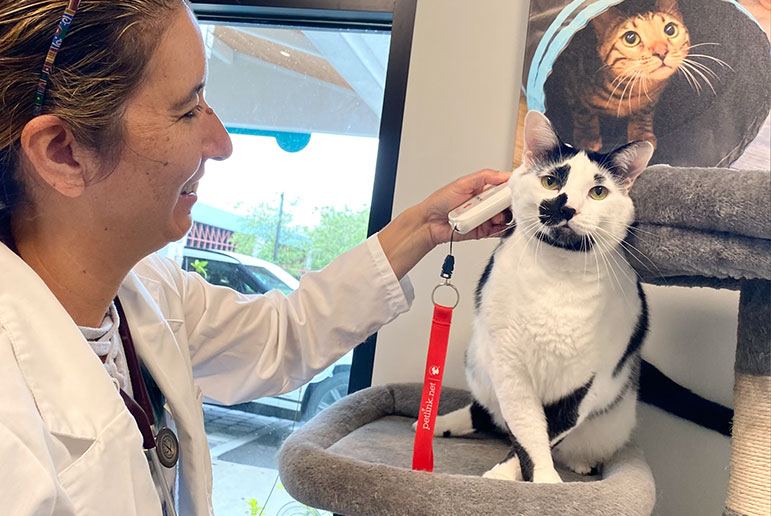We know your dog is more than a pet. He or she is a member of your family. And if the unthinkable happens, and your dog gets lost, microchips are the only permanent way to reunite you with your pet. National Pet ID week is coming up, and we want you to understand how microchips work and how they can benefit you and your furry family member.
How Pet Microchips Work
With a quick and easy procedure, a chip the size of a grain of rice is implanted just under the skin of your pet. This is all done at a vet’s office and without sedation. The process is similar to getting your pet a vaccine. Once the chip is implanted, pet owners will need to contact the microchip company to register their pet and device. Without this registration, the device will not work.
When a lost or injured pet is taken to an emergency room or shelter, he or she will be scanned for the presence of a microchip. This tiny electronic chip uses radio waves to transmit a unique identification number which will connect the dog to the company that provided the microchip. The vet or medical staff calls the microchip company and they contact the owner to reunite them with their pet.
The Benefits of a Microchip
1. A dog microchip or cat microchip won’t become worn or slip off like a collar or ID tag. Your pet will always have a form of identification on them.
2. Microchips do not share personal information with the person who found your pet or scanned them for a microchip. They only identify the microchip company.
3. A
study found that microchipped dogs are returned to their owners 52.2% of the time while dogs without a chip were only reunited 21.9% of the time.
4. Animal microchips do not need batteries, are meant to last for 25 years, and can endure even the most active pet. So, there is no need to replace the chip.
5. Some microchip registries offer advice and support on a 24/7 hotline, travel assistance for a pet found far away from home, and an emergency medical hotline.
6. The average cost of a microchip is $40 - $50.
Get Your Pet A Microchip
While pet parents have
many questions about dog microchips and cat microchips, the use of the technology is now standard practice with veterinarians and shelters, and it’s becoming the norm in pet ownership.
If your pet is lost, we want you to have the best possible chance for a quick and happy reunion. So,
schedule a vet appointment at Pet Paradise and get 50% off microchipping in the month of April!*
*Offer valid through April 30, 2021.




